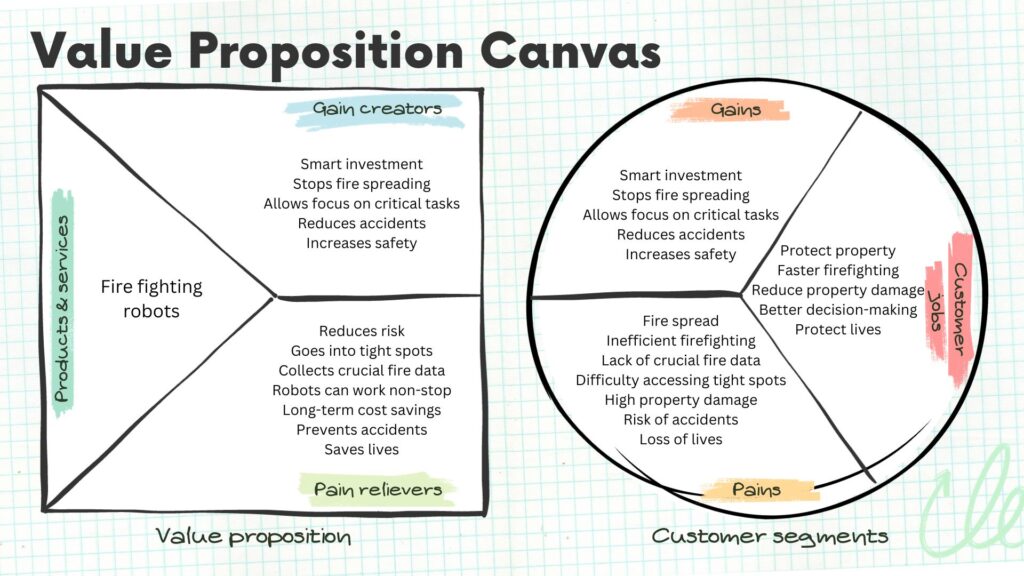Summary
This blog post discusses the development of a strong value proposition for early-stage commercialization. The process involves understanding the target market, collecting pain points, analyzing data, refining the offering, differentiating from competitors, crafting a clear value proposition statement, and continuously testing and iterating. We provide an example of creating a value proposition for firefighting robots, emphasizing the importance of addressing safety, efficiency, data-driven decision making, and cost savings.
Article contributed by
Dr Noor E Karishma Shaik, Editor-in-Chief at IEEE YP IMPACT Blog
Mr Mohammad Tahoon, Editor at IEEE YP IMPACT Blog
At an early stage of commercialization, entrepreneurs and startups often face numerous challenges. From developing a solid business model to attracting customers and securing funding, the road to success can be daunting. However, by following some best practices, you can increase your chances of success and navigate this crucial stage with confidence. In this blog series, we will discuss key best practices for early stage commercialization.
One of the most important aspects of early stage commercialization is developing a strong value proposition. A value proposition is a clear statement that explains how your product or service solves a specific problem or satisfies a customer’s need better than any alternative. It is crucial to clearly communicate the unique value your product or service offers and differentiate it from competitors.

Figure: Step by step approach to build a strong value proposition
Let us consider firefighting robots as our sample commercial product and develop a strong value proposition that potentially attracts customers and can set your business apart in a competitive marketplace.
Example: How to Create a Value Proposition Map for Firefighting Robots?
Let’s discuss an example to illustrate the concept of a value proposition. Being a firefighter is a challenging and hazardous job. Firefighters risk their lives every day to save people and property. However, what if there were robots that could assist in making their work safer and more manageable? Firefighting robots can offer a promising future for safer and more effective firefighting operations.
Understand your target market: The target market for this product is fire departments and emergency response teams who want to enhance their firefighting capabilities and improve the safety of their firefighters and the public.
Collect pain points: The pain points in this line of work include accidents, fire spreading, ineffective firefighting, limited fire data, accessing tight spaces, significant property damage, and loss of lives.
Common themes and opportunities:
- Safety and Risk Reduction: Addressing accident and fire risks, enhancing firefighter and public safety.
- Improved Firefighting Efficiency: Providing more effective methods to overcome challenges and access tight spaces.
- Data-driven Decision Making: Offering solutions for better access to crucial fire data, enabling informed decision-making during firefighting.
- Cost Savings and Investment: Highlighting potential savings through reduced property damage and lives saved, positioning firefighting robots as a smart investment for fire departments.
Refine Your Offering: Our firefighting robots can be equipped with special sensors and cameras that enable them to navigate through smoky environments and locate individuals and hazards. They can also perform tasks that are too risky or monotonous for human firefighters, such as extinguishing fires in hazardous spills or rescuing people from burning buildings.
Differentiate from competitors: Our firefighting robots stand out from competitors due to their advanced sensors and artificial intelligence technology, which enable them to detect and extinguish fires autonomously. Additionally, our robots are designed to navigate through hazardous environments and swiftly locate fires, making them highly efficient in fire suppression operations.
Craft a clear value proposition statement: Here is the initial draft:
“By leveraging the advanced technology and capabilities of firefighting robots, our firefighting robots can reduce the risk of accidents, prevent the spread of fire, and make more informed decisions during firefighting operations. Additionally, the cost savings achieved through reduced property damage and lives saved make firefighting robots a smart investment for fire departments.”
Test and iterate: The feedback that I received:
The value proposition statement is covers the important aspects. However, it could benefit from including a specific mention of the advanced sensors and artificial intelligence technology that enable the robots to detect and extinguish fires autonomously. This highlights a key differentiating factor and showcases the cutting-edge technology utilized by the firefighting robots. Also, try using the Value Proposition Canvas for further clarity.

Figure: The value proposition for firefighting robots as a commercial product
Here is our updated Value Proposition Statement for Firefighting Robots:
Our fire fighting robots provide an innovative solution to combat fires with unmatched efficiency and effectiveness. Unlike traditional methods of human intervention, our robots are equipped with advanced sensors and artificial intelligence technology, allowing them to detect and extinguish fires autonomously. By leveraging cutting-edge technology, our robots can navigate through hazardous environments, swiftly locate fires, and suppress them with precision and speed. With our fire fighting robots, we offer a safer and more efficient way to protect lives and property from the devastating effects of fires.
In the next blog of this series, we will explore market validation and how it plays a crucial role in early stage commercialization.





